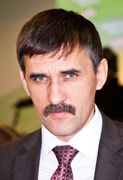  
| |||
|
| Current issue About edition Editorial board To authors Subscription Our authors Files |
|
February 2025, № 1 (245), pages 94-99doi: 10.25198/1814-6457-245-94Marina O.V., Glushkova S.A. 1. Antsibor Y.S. (2022) Pedagogical conditions for adaptation of foreign cadets of a military higher educational institution based on the dialogue of cultures. Vestnik of Orenburg State University, No. 4 (236), pp. 93–99. 2. Arzamastseva N.Y. (2019) Formation of linguistic, speech, phraseological and etymological competence through fairy tales on a phraseological basis in a lesson on Russian as a foreign language. Scientific notes. Electronic scientific journal of Kursk State University, No. 3 (51). URL: https://rusneb.ru/catalog/000199_000009_010914672/ (date of access: 25/08/2024) 3. Vereshchagin E.M. and Kostomarov V.G. (1990) Language and culture: Linguistic and cultural studies in teaching Russian as a foreign language. Moscow: Russian language, 246 p. 4. Volkova N.N. (2005) Russian emotive phraseology in language and text. Candidate thesis. Voronezh. 20 p. 5. Dmitrieva N.M. et al. (2022) Study of the aesthetic and ethical content of a literary text in russian as a foreign language classes. Vestnik of Orenburg State University, No. 2 (234), pp. 57–63. 6. Dolzhikova A.V. (2024) The adaptive content and language integrated system of teaching russian to foreign citizens. Vestnik of Orenburg State University, No. 1 (241), pp. 93–102. 7. Dominikova S.F. (2020) Formation of socio-cultural competencies in teaching RFL (based on culturally marked phraseology). Language competence: methodological aspects of practice-oriented education, pp. 81–87. 8. Droga M.A. (2015) Linguocultural component in the lessons of the RFL (on the example of a quiz game). The world of the Russian word, No. 3, pp. 91–93. 9. Eremina O.S. (2020) Russian non-free expressions in the speech of foreigners: a corpus approach. Russian language abroad, №6 (283), pp. 29–35. 10. Adonina L.V. et al. (2017) The meaning of phraseology in the methodology of teaching Russian as a foreign language. Modern higher school: an innovative aspect, Vol. 9, No. 2. pp. 26–38. 11. Lapaeva T.A. (2007) Stable combinations in the system of linguistic units. Vestnik of the Novgorod State University, No. 44, pp. 75–77. 12. Stepanyan E.V. (2015) The specifics of working with Russian phraseological units with the meaning of time in the Chinese audience. Teacher of the XXI century, No. 3, pp. 181–189. 13. Kuznetsova I.V. et al. (2020) Phraseology and idiomatics in teaching Russian grammar (with Russian-Polish grammatical and lexical parallels). The world of the Russian word, No. 1, pp. 20–25. 14. Chepkova T.P. (2012) Phraseologization of the speech of foreign students as a necessary component of the training of future philologists. Teacher of the XXI century, No. 1, pp. 61–66. 15. Zhang Lei. (2016) Teaching phraseological units of the Russian language as a foreign language in the cultural aspect. Pedagogical education in Russia, No. 12, pp. 159–161. 16. Shukshin V.M. (1998) Collected works in 6 books. The second book. Izdatel’stvo “Nadezhda–1”, 512 p. About this articleAuthors: Maryina O.V., Glushkova S.A.Year: 2025 doi: 10.25198/1814-6457-245-94 |
|
||||||||||||
| Current issue About edition Editorial board To authors Subscription Our authors Files |
|
© Электронное периодическое издание: ВЕСТНИК ОГУ on-line (VESTNIK OSU on-line), ISSN on-line 1814-6465 Зарегистрировано в Федеральной службе по надзору в сфере связи, информационных технологий и массовых коммуникаций Свидетельство о регистрации СМИ: Эл № ФС77-37678 от 29 сентября 2009 г. Учредитель: Оренбургский государственный университет (ОГУ) Главный редактор: С.А. Мирошников Адрес редакции: 460018, г. Оренбург, проспект Победы, д. 13, к. 2335 Тел./факс: (3532)37-27-78 E-mail: vestnik@mail.osu.ru |
1999–2025 © CIT OSU |















